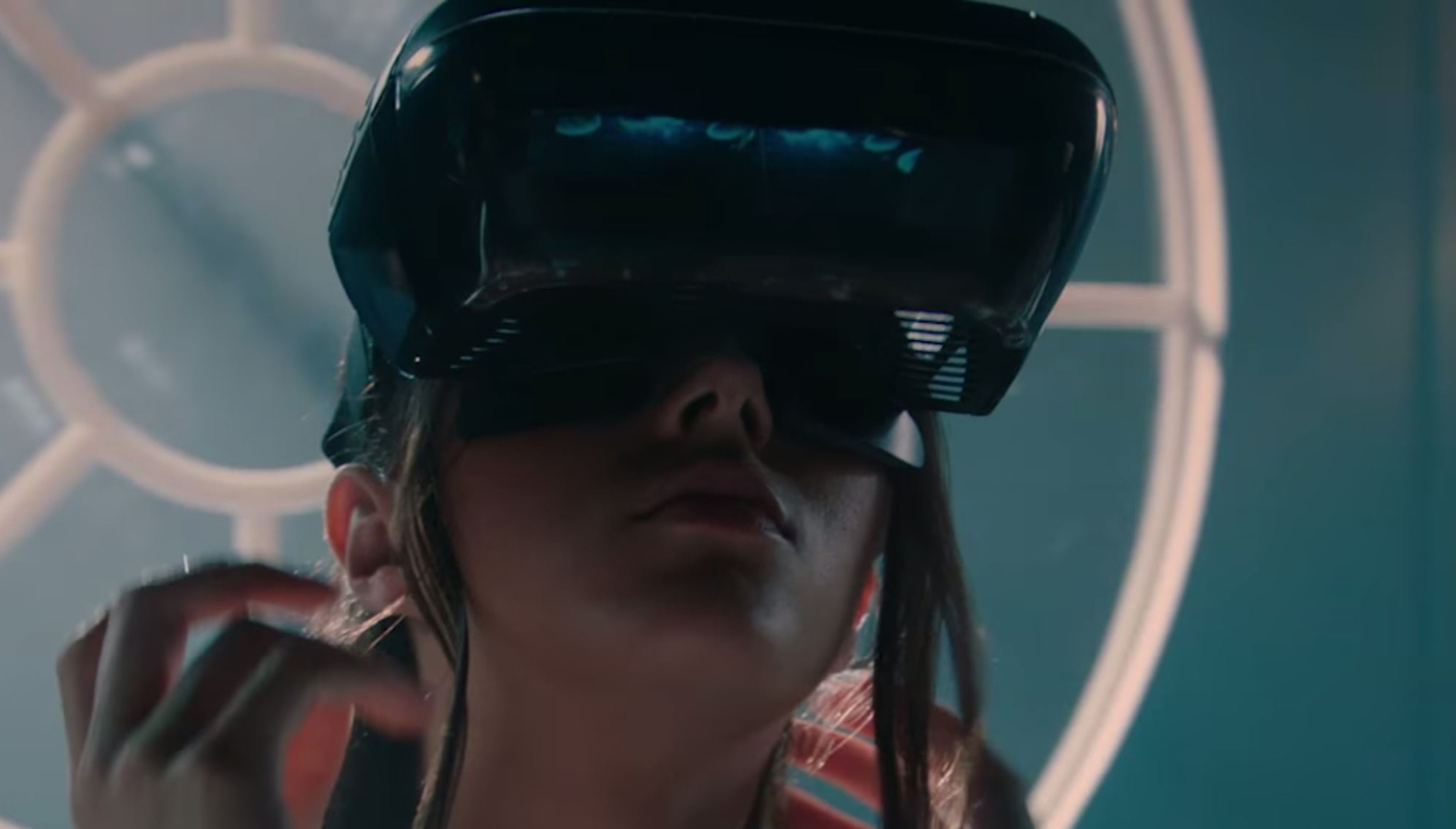Lenovo's Mystery AR Headset Accompanied By A...Lightsaber?
During Disney’s D23 convention on July 15, Lenovo and Disney released a teaser video for Star Wars: Jedi Challenges, which featured an as-yet unannounced augmented reality system. The clip featured a woman putting on the mysterious Lenovo HMD and then picking up a lightsaber peripheral.
We repeat: A lightsaber peripheral for augmented reality. At first, we weren’t sure if it was a prop for the clip, or a real, honest-to-goodness peripheral device, but Lenovo confirmed to Tom's Hardware that the peripheral is real. Disney gave Lenovo a license to create it as part of the Star Wars: Jedi Challenges game launch.
The 28-second clip doesn’t give us much else to go on; we don’t get to see the game, and the shots of the hardware are dark, but we can extract a few details from it.
Lenovo’s AR headset appears to be a standalone device like Microsoft’s HoloLens; it doesn’t appear to have a tether cable like the Meta 2 headset. Lenovo’s HMD features a three-point fabric head strap (like Vive headsets without the Deluxe Audio Head Strap), whereas the company’s VR headset designs feature mechanical head bands. The body of the AR headset is somewhat bulbous and round, and it features a large panoramic lens surrounding the front (like the HoloLens) of the unit. Behind the wraparound lens, you’ll notice two camera lenses (one on each side) which presumably provide spatial tracking, as well as two smaller panels that display the digital content.
Lenovo’s AR headset features prominent ventilation slits below the screens, which presumably aid in reducing lens condensation. You’ll also notice that there are two black flaps at the bottom that block external light from entering near your cheeks. The flaps are an intriguing innovation, mainly because we've never seen the idea before.
There's no way of knowing what we'll find inside the headset, but given the recent push from Qualcomm to develop chips for such a use case, we wouldn't be surprised to find out that Lenovo's headset uses Qualcomm internals.




The device is complete with what we believe to be metal construction and mechanical buttons. The tip of the lightsaber glows blue when it’s on, which we assume helps the headset track the lightsaber’s spatial position (like the PlayStation Move controllers.)
Get Tom's Hardware's best news and in-depth reviews, straight to your inbox.
Lenovo and Disney didn’t say when the headset and game would launch, although the setup is “coming soon.” We suspect Lenovo will have more to say about the hardware in the near future. In the meantime, you can sign up for the Jedi Challenges mailing list to stay apprised of the development and the game’s release.
You'll note that Lenovo has its fingers in multiple facets of the immersive technology space. Later this year, Lenovo plans to launch a handful of immersive devices--some of which we know details about, some of which we don’t. We’ve known for months that the company is building at least two VR headsets. As mentioned above, Lenovo is developing a Windows Mixed Reality headset (we had a chance to see a non-working prototype in January), and it's also building a standalone Daydream headset, which features a similar exterior design as the Windows MR headset. Apparently, Lenovo is now building an augmented reality headset, as well.
Kevin Carbotte is a contributing writer for Tom's Hardware who primarily covers VR and AR hardware. He has been writing for us for more than four years.
-
scolaner Reply19952086 said:It's "Mystery", not "Msytery"
But IS IT THOUGH?!
Oh...yes, it is. Fixed, thanks. -
bit_user Man, I'm so done with anything Star Wars. Disney will market this franchise into the ground.Reply -
captaincharisma yea, i never watched any of the new star wars movies since they have been taken over by mickey mouseReply